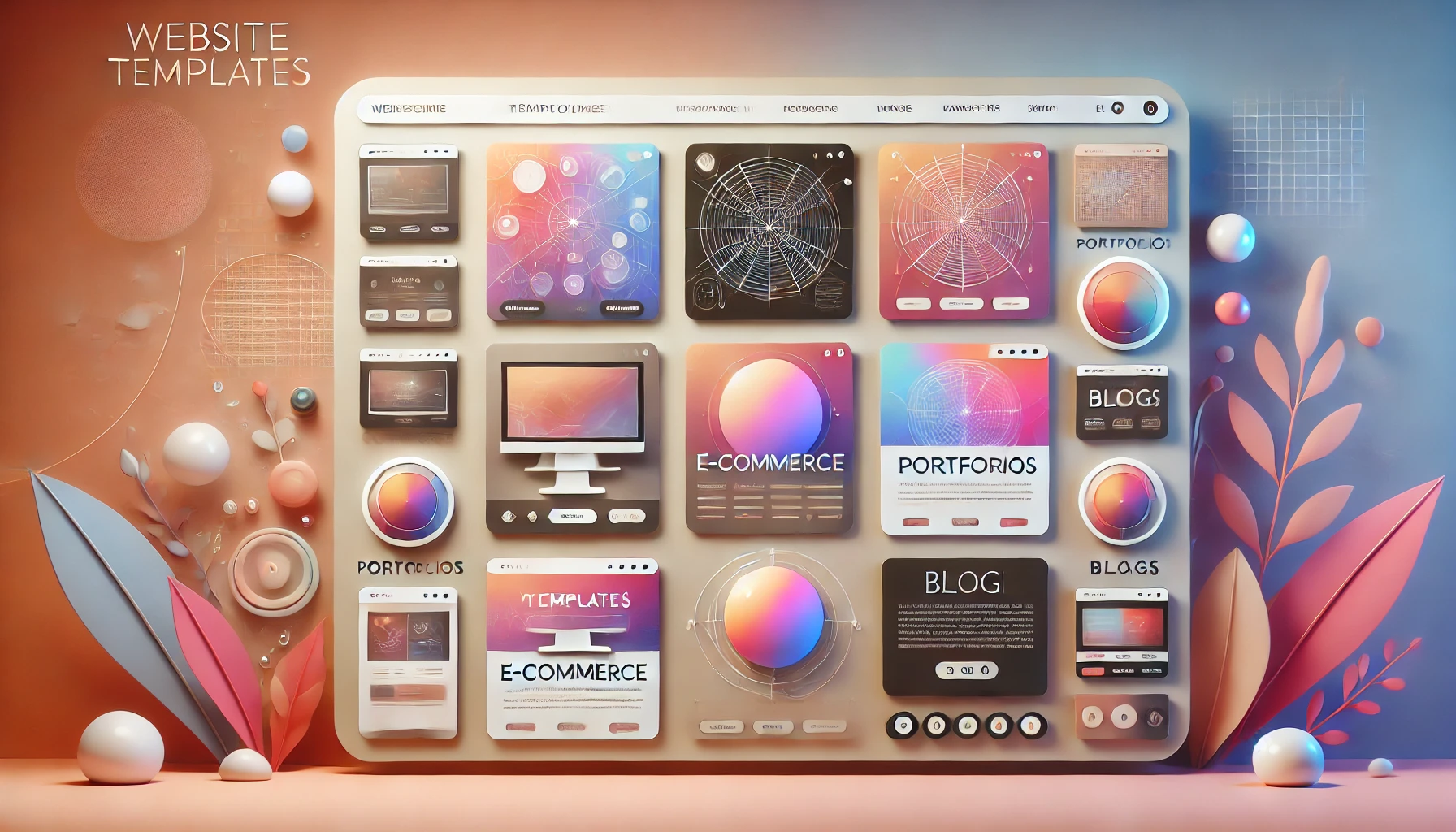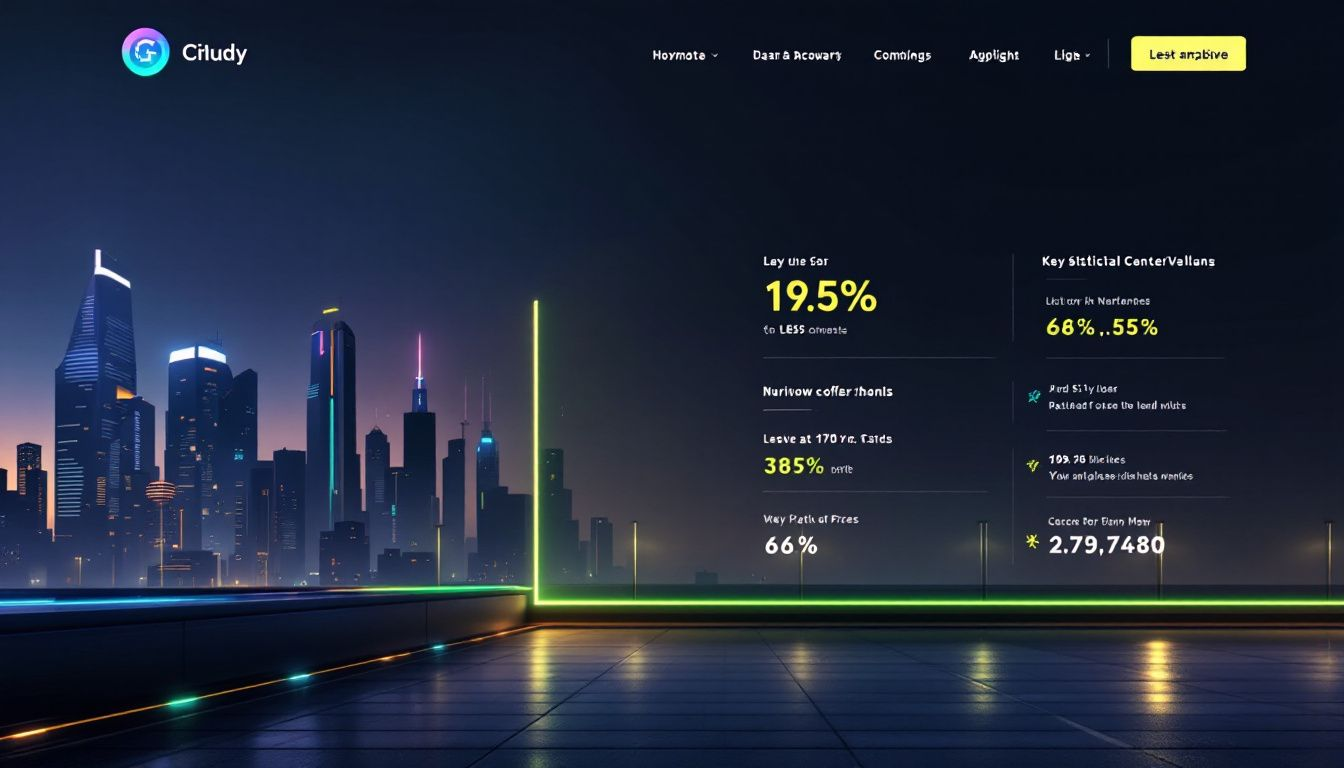

6 Top Trends in Website Design for 2024
Published on September 5, 2024
By Maria Del Carpio . 10 minute read
Looking to improve your website design in 2024? This guide highlights the latest trends and practical steps to make your site more engaging and effective. Learn how to create a website that stands out and drives business growth. In the ever-evolving digital world, embracing no-code and low-code platforms is becoming crucial for modern website design. These innovative tools enable individuals and businesses to build powerful web apps and internal tools without extensive coding knowledge.
Key Takeaways
Website design is crucial in 2024; it shapes first impressions, builds trust, and can significantly boost conversion rates.
Using high-quality, customizable templates, along with no-code and low-code tools, can streamline the design process while still allowing for a unique brand identity.
Also, incorporating AI tools and analytics enhances user experience by personalizing design, automating content, and providing insights for continuous improvement.
The Importance of Website Design in 2024

In 2024, the design of your website holds immense importance. A striking 94% of people’s first impressions are shaped by design quality. Beyond aesthetics, your website’s design directly affects users’ trust in your business, with 75% of users judging trustworthiness based on design. A well-crafted website can boost conversion rates by up to 400%, making it a potent tool for business growth.
However, even a one-second delay in page loading can reduce conversions by 7%. Ensuring a seamless and visually appealing experience is crucial. Additionally, a custom domain boosts credibility and makes your website more memorable.
These elements highlight the importance of investing in high-quality design to succeed in the digital realm.
Starting with High-Quality Templates

High-quality templates can revolutionize your website design journey. These pre-designed frameworks simplify the website creation process by offering a solid foundation aligned with modern design standards.
The right template offers substantial customization, allowing users to craft a distinctive online presence that mirrors their brand identity. You can enjoy both an easy starting point and the flexibility to personalize it.
Customizable Templates
Customizable templates are fundamental in modern website design, offering great flexibility. Leading no-code website builders like Webflow and Weweb provide templates that can be entirely customized to fit individual branding requirements. Users can change design elements such as colors, fonts, and layouts, easily reflecting their unique brand identity.
For instance, using off-white color schemes can create a warm, inviting aesthetic that enhances user comfort. With drag-and-drop functionality, video tutorials, and powerful apps, even those without technical skills can craft professional, personalized websites.
Mobile-Friendly Design
In today’s mobile-first world, a mobile-friendly website is indispensable. Over half of web traffic originates from mobile devices, necessitating a consistent and high-quality visual experience across all screens. Mobile-friendly designs enhance user engagement and significantly impact search engine rankings, boosting visibility and reach.
Websites optimized for mobile are 40% more likely to convert visitors compared to those that aren’t. No-code platforms with drag-and-drop functionality and interactive elements ensure your site looks and performs well on mobile devices, so you capture this crucial audience segment.
Enhancing User Experience with Design Intelligence

AI and design intelligence have revolutionized website design, making it more intuitive and user-centric. AI tools offer tailored expertise and guidance, creating designs that respond to user behavior and preferences. This saves time and ensures that the resulting websites provide an enhanced user experience through tailored designs.
Leveraging design intelligence allows businesses to create more engaging and effective websites. These AI-driven tools provide personalized design suggestions, drag-and-drop functionality, and automated content creation, all contributing to a seamless and enjoyable user experience.
Exploring each of these aspects further reveals how they can transform your web design process.
Personalized Design Suggestions
AI tools are crucial for offering personalized design suggestions that cater to user preferences and behavior. These tools create personalized experiences for different personas and customers, ensuring content and design resonate with specific audiences. Tailoring the visual appeal and functionality of websites, these suggestions make the sites more engaging and user-friendly.
Whether working on a personal project or a business website, AI-driven design intelligence can significantly enhance the overall user experience.
Drag-and-Drop Functionality
Modern website builder have simplified web design with intuitive drag-and-drop functionality and a drag and drop interface. This feature allows users to create custom layouts without coding skills, making web design accessible to all. Using drag-and-drop tools enables creative placement of elements, enhancing user navigation and overall experience.
The flexibility of these internal tools allows effortless adjustments to your design to meet specific needs, ensuring a personalized and engaging site.
Automated Content Creation
Automated content creation tools are essential for ensuring brand consistency and saving time. These tools automate performance tracking and offer insights for content optimization, significantly reducing the time spent on manual content creation and updates. Maintaining relevant and high-quality content with less effort, automated content tools ultimately enhance user experience.
With features like image generation and machine learning, these tools dynamically create new pages and content that align with your brand’s voice and style.
Essential Design Tools for a Standout Website

Creating a standout website demands the right set of tools. No-code platforms offer a variety of powerful tools for designing an engaging and functional website without writing code. These tools include SEO optimization, social media integration, and analytics, each playing a crucial role in enhancing your site’s performance and reach.
Leveraging these no-code tools and rapid application development saves time, streamlines your tech stack, and allows you to focus on creating an exceptional user experience.
SEO Optimization Tools
SEO optimization tools are crucial for increasing your website’s visibility on search engines. Effective SEO tools enhance search engine visibility, increasing the likelihood of attracting organic traffic to your site.
Regularly reviewing on-page SEO elements and using tools to optimize them can significantly boost your site’s performance. Neglecting updates can lead to slow loading times and a decline in search engine rankings, so maintaining and improving your site’s SEO is essential.
Integration with Social Media
Integrating social media platforms into your website helps create a unified online presence and boosts audience interaction. These integrations allow brands to maintain a consistent digital identity across all platforms, amplifying content reach and fostering engagement.
Effective social media integration improves user experience and encourages more engaged interactions, making it a critical component of modern web design.
Analytics Tools
Analytics tools provide valuable insights into user behavior and engagement, enabling informed design enhancements. Understanding how users interact with your site allows for strategic changes to improve their experience. Regularly monitoring your website’s performance with analytics tools helps identify issues early and ensures smooth operation.
These tools also use AI algorithms to analyze user behavior, dynamically adjusting content to enhance engagement and satisfaction.
Creative Layouts and Styles

Experimenting with creative layouts and styles is essential to keeping your website fresh and engaging. Unique layouts can differentiate your site from competitors and enhance user experience. Regularly updating the design fosters a dynamic online presence that attracts repeat visits.
No-code agencies provide extensive development knowledge and powerful web apps, making it easy to experiment with different layouts and styles, ensuring your website remains visually appealing and functional. With a no code platform and a no-code app builder, you can streamline the development process using no code apps.
Exploring Unique Layouts
Unique layouts can significantly enhance your website’s first impression. Utilizing deconstructed hero sections creates memorable first impressions by challenging traditional layouts. Incorporating juxtaposed text and image styles creates striking contrasts that capture visitor interest.
These creative approaches help your site stand out in a crowded digital landscape, enhancing user engagement and satisfaction.
Applying Curated Design Styles
Applying curated design styles ensures your website maintains a cohesive visual identity. Curated styles streamline the appearance, aligning all elements with your brand identity. Users can browse and instantly apply alternate styles, allowing for quick updates that keep the site looking fresh and professional.
A well-chosen color palette can significantly contribute to branding and user engagement, making it a vital aspect of web design.
Practical Steps to Designing Your Website

Designing your website using no-code platforms involves several practical steps. Initial planning is crucial as it sets the foundation for project success by defining goals, understanding user needs, and establishing a roadmap.
No-code tools enable more people to build websites and apps, making the design process accessible and intuitive. Following these practical steps helps you efficiently create a functional and visually appealing website using an app builder and app development.
Choosing the Right Template
Choosing the right template is the first step in creating a successful website. Initial planning helps define your goals and understand user needs, setting a strong foundation for your project. Selecting a template that aligns with your brand and design vision ensures your website meets your objectives and resonates with your audience.
Customizing Design Elements
Customizing design elements is where you can truly personalize your website. Drag-and-drop tools provided by no-code platforms enable easy adjustments to fonts, colors, and imagery to reflect your brand identity. A well-chosen color palette and customized visuals significantly enhance branding and user engagement, creating a tailored website experience.
Previewing and Testing
Previewing and testing your website design across different devices is crucial for optimizing user experience. Responsive web design preview allows you to see how your site will appear on various screens in real-time. Comprehensive testing and quality assurance ensure your site functions properly across all platforms, enhancing usability and reliability.
Conducting user testing and gathering feedback helps make iterative improvements, ensuring your website meets user expectations.
Launching and Maintaining Your Website

Launching and maintaining your website involves several key steps. Adding a custom domain enhances professionalism and brand identity, making your site more credible. Regular updates and maintenance are essential to keep your website secure and up-to-date, ensuring continued performance.
Collecting and analyzing user feedback enables continuous improvement of your site and adaptation to user needs.
Adding a Custom Domain
Adding a custom domain to your website is a simple yet effective way to enhance professionalism and brand identity. A custom domain makes your site more memorable and credible, helping to establish trust with your audience and differentiate your brand in the digital world.
Regular Updates and Maintenance
Regular updates and maintenance are essential for the longevity and security of your website. Routine updates to software, content, and security features prevent vulnerabilities and improve performance. Scheduled backups protect your data in case of failures or security breaches, ensuring data integrity.
Post-launch reviews and continuous monitoring help identify issues early, keeping your website running smoothly and efficiently. These practices save valuable time and resources, ensuring your business remains competitive and responsive to user needs.
Analyzing User Feedback
Analyzing user feedback is crucial for continuous improvement and enhancing user experience. Collecting feedback through surveys, user testing sessions, and analytics tools helps identify common themes and prioritize issues for resolution.
Implementing changes based on feedback should follow a structured approach to ensure updates meet user needs and improve overall satisfaction. By actively listening to your users, you can make informed design enhancements that keep your website relevant and engaging.
Summary
As we wrap up our exploration of the top trends in website design for 2024, it’s clear that leveraging no-code, low-code platforms and AI design tools can significantly enhance your web presence. From starting with high-quality, customizable templates to ensuring mobile-friendly and AI-driven designs, each step plays a crucial role in crafting a successful website. Essential tools like SEO optimization, social media integration, and analytics are indispensable for a standout web experience. Regular updates, maintenance, and user feedback analysis ensure your site remains dynamic and user-centric. Embrace these trends and tools to stay ahead in the digital world and create websites that not only look great but also perform exceptionally.
Explore our success stories to see how we've empowered our clients and achieved remarkable results through Kreante's design and development expertise.
Frequently Asked Questions
Why is website design so important in 2024?
Website design is vital in 2024 because it shapes first impressions and impacts user trust, ultimately driving conversion rates. A polished and user-friendly site makes all the difference in capturing and retaining customers.
What are the benefits of using high-quality templates in web design?
Using high-quality templates in web design saves you time and ensures you meet modern standards, while also allowing for easy customization to reflect your unique style. This combination leads to a professional-looking website without the hassle.
How does AI enhance user experience in web design?
AI boosts user experience in web design by delivering personalized design recommendations and automating content creation, making it easier to create intuitive and responsive layouts that cater to user behavior.
What tools are essential for creating a standout website?
To create a standout website, you'll need SEO optimization tools, social media integration, and analytics tools. These essentials boost visibility, engage your audience, and help you understand user behavior effectively.
How important is mobile-friendly design for websites?
Mobile-friendly design is essential since over half of web traffic originates from mobile devices, ensuring a seamless experience that boosts user engagement and improves search engine rankings. Don't overlook it!




Wondering how NoCode/LowCode can revolutionize your project?








